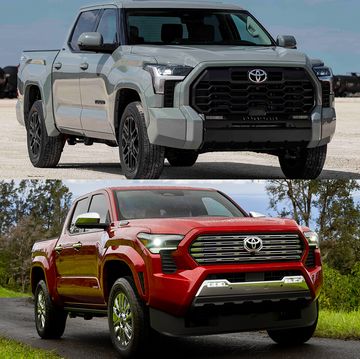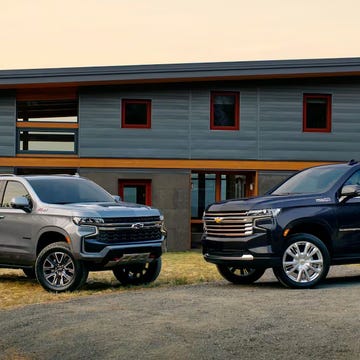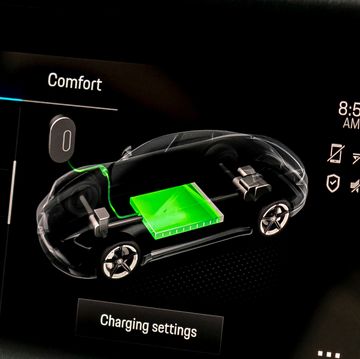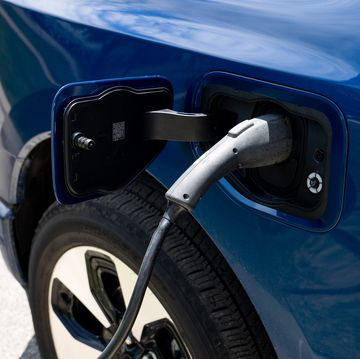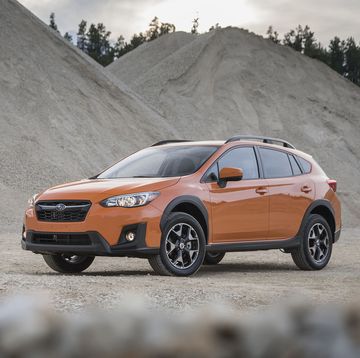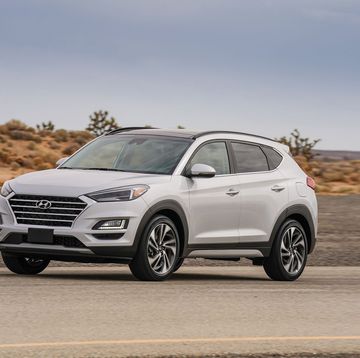If you're in the market for a new vehicle, you have several things to consider before you make a purchase. Even if you know what kind of car or SUV you want to buy, you have to make decisions such as whether you need two-wheel or four-wheel drive. This article will discuss the aspects of a 2 wheel drive vs 4 wheel drive vehicle.
Different Car Drivetrains
The drivetrain, which sends power to the car's wheels, can make a significant difference in how the vehicle handles in rain and snow or on unpaved roads. According to Consumer Reports, passenger vehicles produced for 2012 and onward feature electronic stability control. This feature works with traction control to improve the car's road-holding functions, regardless of its drivetrain. However, if you're looking for the best grip, all- and four-wheel drive systems tend to perform better on wet roads.
As Economical notes, two-wheel drive systems come standard on most passenger vehicles. With two-wheel drive, the engine sends power to two of the car's wheels while allowing the other two wheels to spin. Because the engine doesn't have to use energy to power all four wheels, and because two-wheel drive systems weigh less than four-wheel drive, two-wheel drive vehicles are lighter and more fuel-efficient.
Pros and Cons of Two-Wheel Drive
Two-wheel drive vehicles come in either front-wheel or rear-wheel configurations. This means that, depending on the car, the engine sends power to either the front or rear wheels. According to Autotrader, two-wheel drive vehicles are excellent choices for drivers in Southern California, Texas, and the Southeast, because these regions have mild weather conditions. In areas such as the Mid-Atlantic, where you might occasionally see snow, two-wheel drive vehicles are sufficient if that's what you're comfortable with.
As Be Forward notes, there are pros and cons to driving two-wheel drive vehicles. The pros include the following:
- Two-wheel drive vehicles are less expensive than four-wheel drive models.
- Two-wheel drive vehicles use less energy to power the wheels, so they are more fuel-efficient.
- Two-wheel drive vehicles are lighter, so they are more agile.
Cons include:
- Two-wheel drive vehicles give you less power than four-wheel drive models.
- Two-wheel drive vehicles are not suitable for all terrains.
Esurance points out that most two-wheel drive vehicles come in a front-wheel drive configuration. Except for a few SUVs models, most SUVs are front-wheel drive and feature extra components that can send power to the rear wheels when necessary. Front-wheel drive systems cost less to make and take up less space than rear-wheel drive configurations. Because a front-wheel drive configuration places the engine's weight above the front wheels, it also gives you better traction. Front-wheel drive vehicles don't have the driveline hump needed to accommodate a rear-wheel drive system, so you have more room for passengers and cargo.
Rear-Wheel Drive Configurations
Consumer Reports notes that pickup trucks, SUVs on truck bases, sports cars, high-performance cars, and high-end sedans feature rear-wheel drive systems. With a rear-wheel drive configuration, trucks can accommodate bulky and robust components. Rear-wheel drive also gives a pickup truck better traction when towing or hauling heavy loads.
Performance cars come with rear-wheel drive because the system balances the car's weight from the front end to the rear end, giving the vehicle improved handling. When the driving and steering are split between the front and rear wheels, it allows for an optimized suspension. However, because rear-wheel drive vehicles have less traction, most luxury vehicles give you the option of all-wheel drive.
As Autotrader points out, most drivers can't tell the difference between front-wheel and rear-wheel drive. However, rear-wheel drive systems are designed for performance, while front-wheel drive systems are designed more for safety, especially in harsh weather conditions. Front-wheel drive systems are more common in family vehicles.
Four-Wheel Drive vs. All-Wheel Drive
Four-wheel drive systems, according to Economical, often feature in pickup trucks and other vehicles used for off-road excursions. However, more manufacturers are adding them to SUVs and crossover vehicles. In a four-wheel drive vehicle, the engine sends power to all wheels, giving you optimal traction and control, especially on rough terrain. This traction comes in handy if you're driving uphill, over rocky terrain, or through the snow.
Four-wheel drive systems are set up to operate in one of three modes, including:
- Full-Time: All four wheels are permanently engaged.
- Part-Time: The driver can manually switch between two-wheel and four-wheel drive, depending on driving conditions.
- Automatic: The vehicle monitors road conditions and switches automatically from two-wheel to front-wheel drive as needed.
Vehicles with part-time or automatic four-wheel drive systems tend to be more fuel-efficient because they use less energy to operate in two-wheel drive mode.
While sales text often uses the terms four-wheel drive and all-wheel drive interchangeably, as Consumer Reports points out, there are some differences. Four-wheel drive systems are designed for handling harsh terrain and feature high and low gear ranges for climbing power. Many four-wheel drive vehicles also have differentials that are locked for optimal traction.
Economical points out that, while four-wheel drive vehicles can tackle rocky terrain, steep hills, and deep water, all-wheel drive vehicles are better for driving on slippery winter streets, through mud, and on loose surfaces such as sand. An all-wheel drive system allows all four of your vehicle's wheels to provide traction. This means that if two wheels are stuck in mud or snow, the other two wheels can still function to pull the car out. All-wheel drive systems run at all times and are controlled by a computer system that determines which wheels need more power.
Depending on the system's design, all-wheel drive systems can give a vehicle maximum traction when accelerating. Most systems are designed to provide primary power to the front or rear wheels. The system can redistribute power when it senses slippage. With an all-wheel drive like that found in Subaru models, 20 percent of the engine's power is distributed to the rear wheels at all times. Other systems send 100 percent of the power to the front wheels, only powering the rear wheels when there is slippage.
Pros and Cons of Four-Wheel Drive Systems
As with two-wheel drive vehicles, there are advantages and disadvantages to four-wheel drive vehicles. The advantages include:
- Four-wheel drive vehicles are suitable for off-road driving.
- Many four-wheel drive systems allow you to switch to two-wheel drive when you don't need four-wheel drive power.
The disadvantages are:
- Four-wheel drive vehicles are heavier because four-wheel drive systems weigh more.
- Four-wheel drive vehicles are more expensive than two-wheel drive.
- Four-wheel drive vehicles consume more fuel because four-wheel drive systems use more energy.
In some situations, a good set of tires matters more than the vehicle's drivetrain. For example, snow tires assist you with stopping and turning on winter roads, something the drivetrain doesn't help you with.
Consider where you live and the type of driving you do when choosing between two-wheel and four-wheel drive vehicles.
Information and research in this article verified by ASE-certified Master Technician Duane Sayaloune of YourMechanic.com. For any feedback or correction requests please contact us at research@caranddriver.com.
Sources:
https://www.consumerreports.org/cro/2012/12/2wd-awd-or-4wd-how-much-traction-do-you-need/index.htm
https://www.autotrader.com/car-shopping/2wd-4wd-or-awd-which-is-best-for-you-215919
https://blog.beforward.jp/car-talk/features-differences-two-wheel-drive-four-wheel-drive.html
https://blog.esurance.com/whats-the-difference-between-2wd-4wd-and-awd/
https://www.caranddriver.com/features/a27630736/awd-vs-4wd/
https://www.caranddriver.com/features/a28183249/new-tire-buying-guide/


